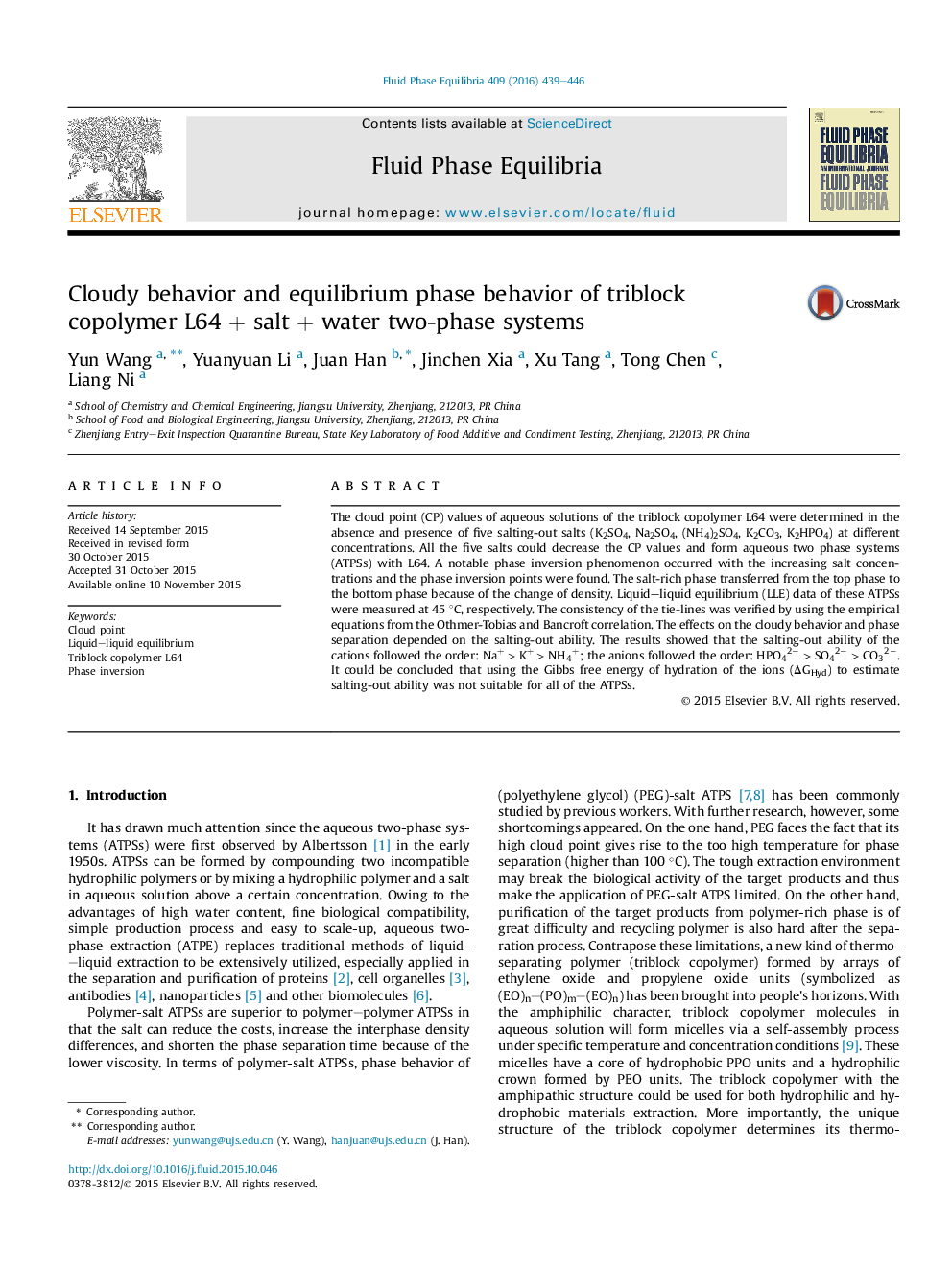| کد مقاله | کد نشریه | سال انتشار | مقاله انگلیسی | نسخه تمام متن |
|---|---|---|---|---|
| 201376 | 460545 | 2016 | 8 صفحه PDF | دانلود رایگان |

The cloud point (CP) values of aqueous solutions of the triblock copolymer L64 were determined in the absence and presence of five salting-out salts (K2SO4, Na2SO4, (NH4)2SO4, K2CO3, K2HPO4) at different concentrations. All the five salts could decrease the CP values and form aqueous two phase systems (ATPSs) with L64. A notable phase inversion phenomenon occurred with the increasing salt concentrations and the phase inversion points were found. The salt-rich phase transferred from the top phase to the bottom phase because of the change of density. Liquid–liquid equilibrium (LLE) data of these ATPSs were measured at 45 °C, respectively. The consistency of the tie-lines was verified by using the empirical equations from the Othmer-Tobias and Bancroft correlation. The effects on the cloudy behavior and phase separation depended on the salting-out ability. The results showed that the salting-out ability of the cations followed the order: Na+ > K+ > NH4+NH4+; the anions followed the order: HPO42−HPO42− > SO42−SO42− > CO32−CO32−. It could be concluded that using the Gibbs free energy of hydration of the ions (ΔGHyd) to estimate salting-out ability was not suitable for all of the ATPSs.
Figure optionsDownload as PowerPoint slide
Journal: Fluid Phase Equilibria - Volume 409, 15 February 2016, Pages 439–446